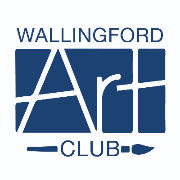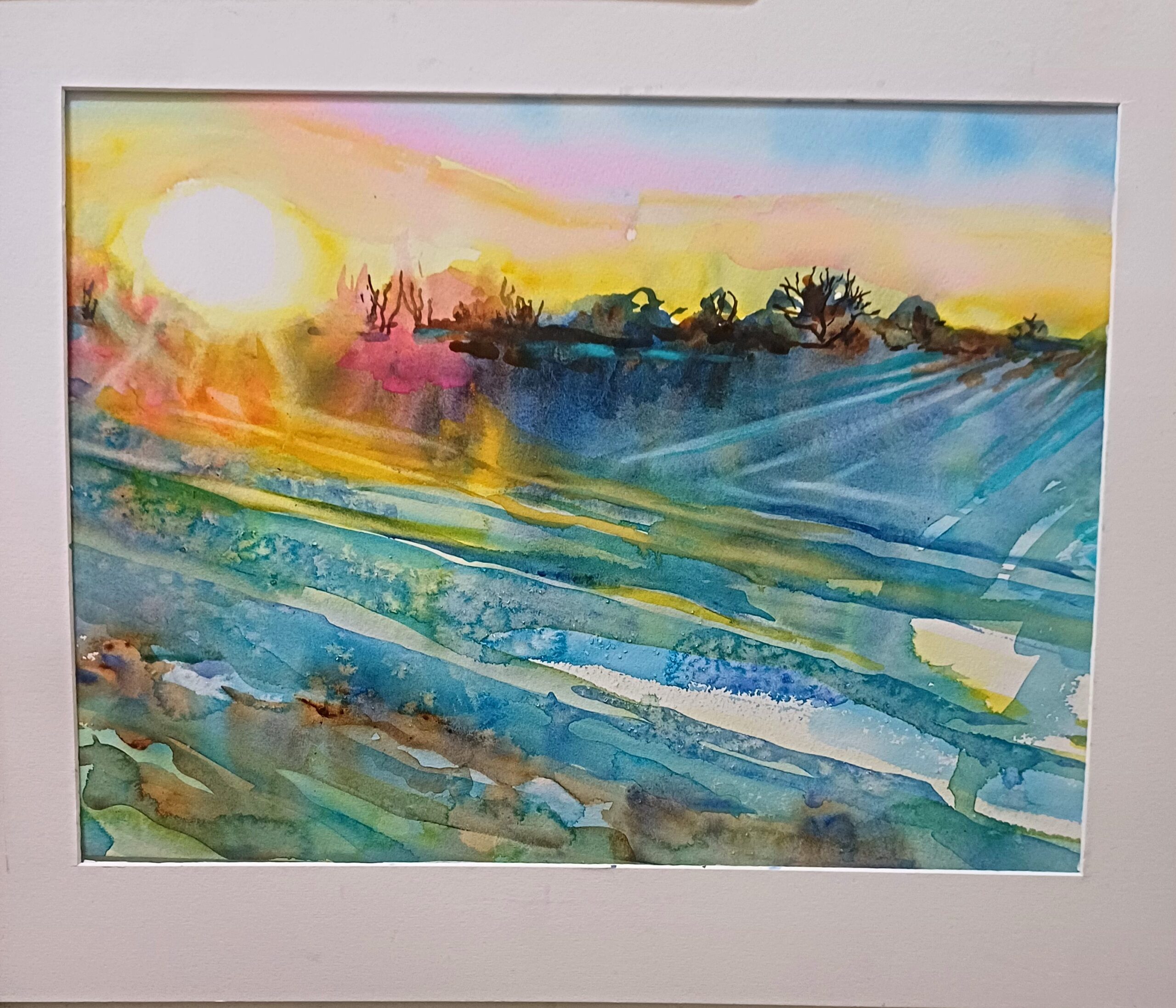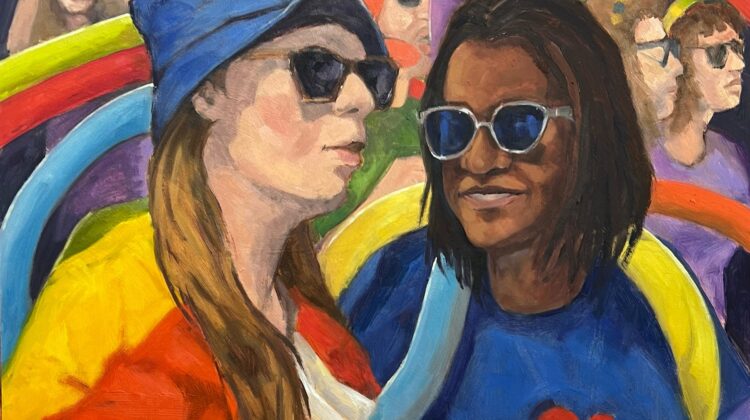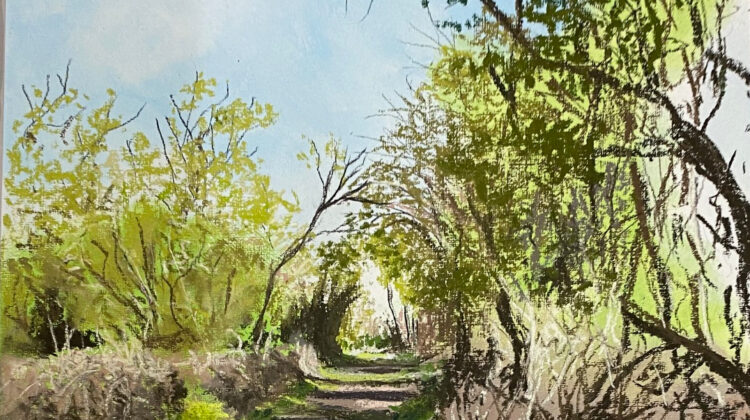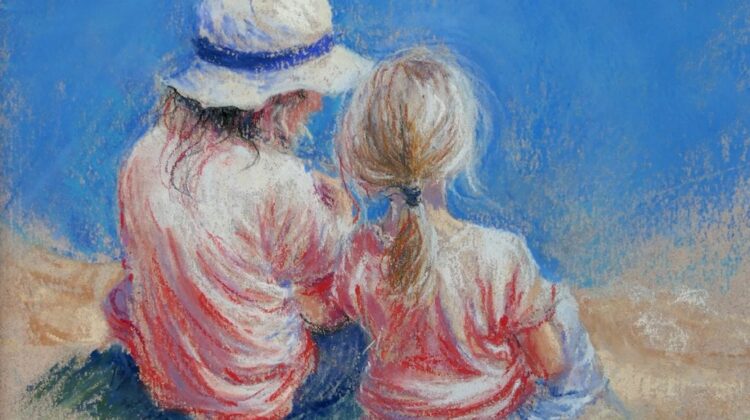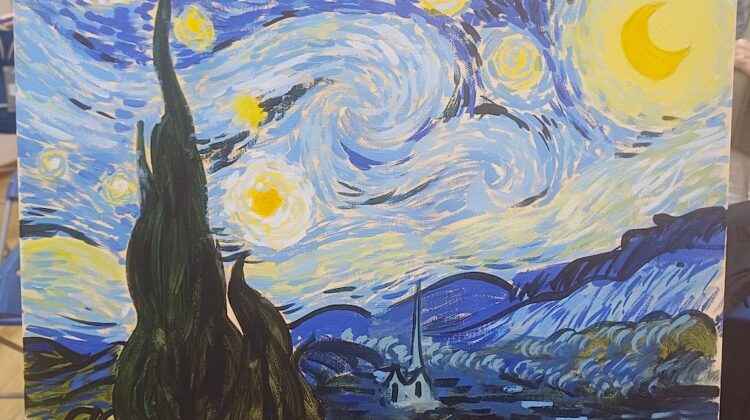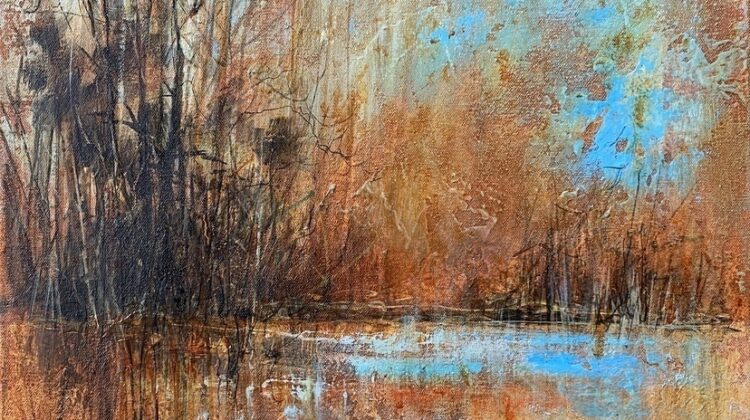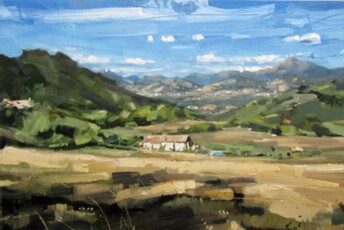August’s live demo saw Bath-based artist, Catherine Beale, create a landscape in watercolours. Catherine specialises in light-filled watercolours and says she has grown to love the excitement of the wet-in-wet ‘gravity painting’ technique. Here’s a step-by-step guide to her process.
Tools
Catherine favours Daler Rowney watercolour artboard, as it is more robust, takes water well and allows for lifting off/rubbing out paint. She uses 1″ and 3/5″ flat head brushes to give loose sweeps of colour, using the sharp side of the brush for details and lifting off colour, plus a rigger for final detailing.
She very often alters her source photos to saturate them with colour, to strengthen the tonal contrast. She uses large well daisy pallettes, enabling her to mix up good amounts of each colour before starting.
She favours transparent watercolours and is wary of using any colour that is more opaque (eg she uses indantherene blue rather than the opaque ultramarine). She uses a large board which is propped up on a slant, to encourage drips.
Starting
She will create loose, light pencil lines, to mark out horizons and key features, often raising horizon lines to be less than the traditional third. She wets the areas she wants to paint into, leaving gaps of dry paper, where she doesn’t want the colours to blend.
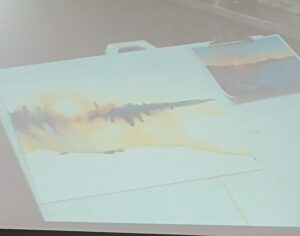 In this image, she applied loose washes of transparent yellow, for the horizon sun and foreground sun reflections, Pthalo blue for the sky (rather than opaque cobalt) and indigo and burnt umber layers for the trees. She let the colours blend and run.
In this image, she applied loose washes of transparent yellow, for the horizon sun and foreground sun reflections, Pthalo blue for the sky (rather than opaque cobalt) and indigo and burnt umber layers for the trees. She let the colours blend and run.
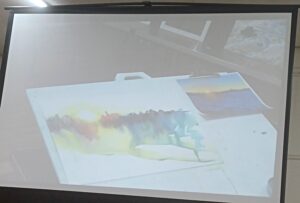
She then added foreground washes in Pthalo blue and turqoise, ultramarine and sap green, aiming for movement, using diagonals and directing the paint using different directional brush strokes.
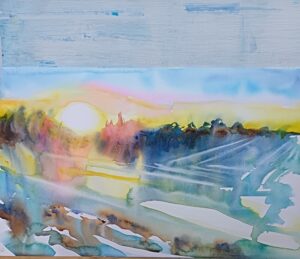
She added more detailed areas, depicting the furrowed fields, using the same washes and layering over light washes of the same colour (or a light mauve) in a lighter or darker tone to give depth. By using the same colour when layering, you avoid creating ‘muddy’ colours. She added permament rose and alazarin crimson into the sky and tree areas.
At this point, she started lifting out paint using an almost dry, ‘thirsty’ brush, to create the field furrows, sun’s rays (work from the centre point of the sun and vary the length, regularity and tone), gaps between trees (being careful here not to be too symmetrical), the horizon glow and some foreground detailing. She said that only the darkest staining blues were difficult to lift off.
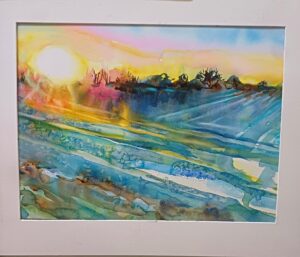 She added salt to the foreground to give texture to the furrow tops. In the final instance, she used a rigger to darken the base of the trees, and add branch detailing. She added some neat paint as colour ‘pops’, using an almost dry brush in some areas, eg around the sun and the field furrow tops, being careful again not to be too symmetircal, nor to overdo it.
She added salt to the foreground to give texture to the furrow tops. In the final instance, she used a rigger to darken the base of the trees, and add branch detailing. She added some neat paint as colour ‘pops’, using an almost dry brush in some areas, eg around the sun and the field furrow tops, being careful again not to be too symmetircal, nor to overdo it.
This was her finished painting on the night, although Catherine said it wasn’t fully finished and that she would work on it further, adding some more detailing and glazed layers in some areas.
She has written a book with step-by-step tutorials, whcih is available at £17.99 from her website, as are some brief, free tutorials.
Her website is at: https://catherinebeale.com/
